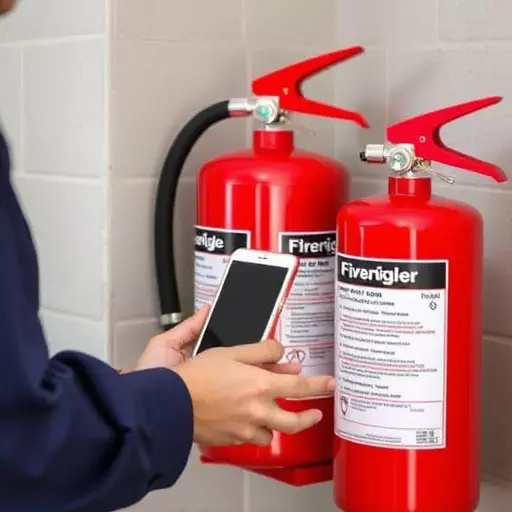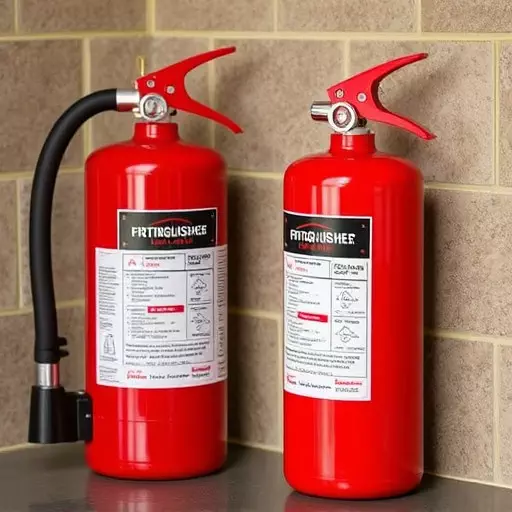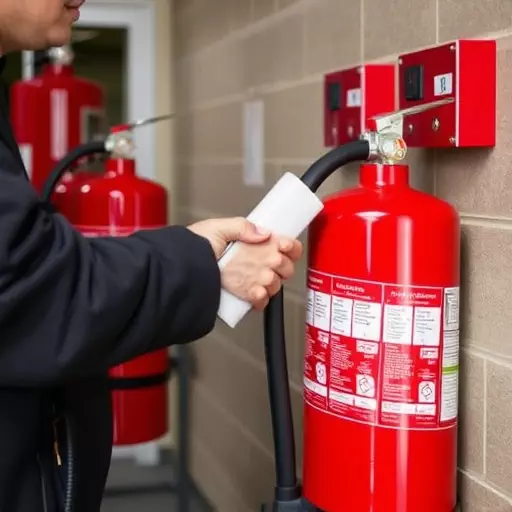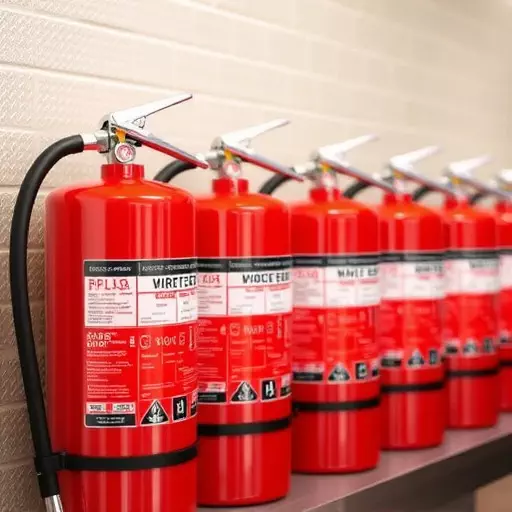“Ensure your safety and protect your Spring Lake property with a comprehensive understanding of Class K fire extinguisher inspection. This guide delves into the critical aspects of regular maintenance, offering a detailed step-by-step process to keep your fire extinguishers in top condition.
From ‘Understanding Class K Fire Extinguishers’ to ‘Staying Compliant: Local Regulations and Standards’, every section is crafted to empower you with knowledge. Master the art of creating an effective fire extinguisher checklist, identify common issues, and implement preventive maintenance tips. Stay ahead of potential hazards with monthly inspections.”
- Understanding Class K Fire Extinguishers
- The Importance of Regular Inspection
- Creating a Comprehensive Fire Extinguisher Checklist
- Step-by-Step Inspection Process
- Common Issues and How to Address Them
- Maintenance Tips for Optimal Performance
- Staying Compliant: Local Regulations and Standards
Understanding Class K Fire Extinguishers

Understanding Class K Fire Extinguishers is essential for any business or property owner in Spring Lake looking to ensure optimal fire safety. These extinguishers are designed specifically to tackle fires involving combustible liquids, cooking oils, and fats—common hazards in many commercial kitchens and industrial settings. Unlike other types, Class K fire extinguishers employ a unique dry chemical agent that creates a barrier between the fuel and oxygen, effectively smothering the flame.
Regular Fire Extinguisher Inspection is crucial to maintain their reliability. A comprehensive monthly fire extinguisher inspection checklist should include verifying the extinguisher’s charge level, ensuring proper labeling and accessibility, checking for any signs of damage or corrosion, and confirming that the trigger mechanism is in good working order. By adhering to these practices, Spring Lake businesses can enhance their fire safety preparedness and mitigate potential risks effectively.
The Importance of Regular Inspection

Creating a Comprehensive Fire Extinguisher Checklist

Creating a comprehensive fire extinguisher checklist is essential for maintaining safety in any facility. For businesses in Spring Lake, regular monthly fire extinguisher inspections are non-negotiable. Begin by evaluating the type and placement of each extinguisher, ensuring they meet industry standards and are easily accessible. Check for visible damage or corrosion, as well as the expiration date on the cartridge, following manufacturer guidelines for replacement.
Include in your checklist a test of the extinguisher’s operation, where available, to confirm its functionality. Verify that safety instructions and labels are legible and in the right places. Also, inspect the surrounding area for potential hazards that might obstruct access or present risks during an emergency evacuation. Regularly updating this checklist ensures that your fire safety measures stay robust and effective, providing peace of mind in the event of an unexpected fire.
Step-by-Step Inspection Process

Common Issues and How to Address Them

Regular fire extinguisher inspections are crucial for ensuring safety in any Spring Lake facility. Common issues that arise during these checks often include missing or damaged components, outdated extinguishers, and improper storage. Addressing these problems promptly is vital to maintain optimal functionality during an emergency.
To rectify these issues, implement a detailed fire extinguisher inspection checklist. This should cover visual examinations for signs of wear and tear, checking expiration dates, and verifying the integrity of all parts. Regular monthly inspections, as recommended by safety guidelines, enable early detection and correction of any defects, ensuring that fire extinguishers are always ready for immediate use when needed.
Maintenance Tips for Optimal Performance

Regular maintenance is key to ensuring your fire extinguisher remains operational and ready for use in case of an emergency. At Spring Lake, we recommend a comprehensive fire extinguisher inspection checklist be followed to keep these vital safety devices in optimal condition. This includes visually inspecting the extinguisher for any signs of damage, corrosion, or leakage on a monthly basis. Check that the pressure gauge reads within the normal operating range and that all components are securely fastened.
Additionally, it is crucial to test the fire extinguisher’s functionality by activating the discharge lever (without triggering an actual fire) to verify proper operation. Keep detailed records of each inspection, noting any maintenance or repairs performed. Regular attention to these tasks will guarantee your fire extinguisher is always ready to suppress a fire effectively when needed most, providing peace of mind for Spring Lake residents and businesses alike. Remember, a well-maintained fire extinguisher could be the difference between a minor incident and a major disaster.
Staying Compliant: Local Regulations and Standards

Staying compliant with local regulations and standards is paramount when conducting Fire Extinguisher Inspections in Spring Lake. Each region has its own set of guidelines governing fire safety, including specific requirements for equipment maintenance and inspection routines. For instance, many areas mandate monthly fire extinguisher inspections to ensure these critical safety devices are operational and readily available in case of an emergency. Adhering to these standards not only meets legal obligations but also significantly contributes to a safer community.
A comprehensive Fire Extinguisher Inspection Checklist should be followed meticulously during each visit. This includes verifying the device’s physical condition, checking for any signs of damage or corrosion, ensuring proper labeling and accessibility, and inspecting the pressure gauge to guarantee it reads within the acceptable range. Regular maintenance and inspections are key to keeping fire extinguishers in top working order, ready to suppress fires effectively when needed most.


